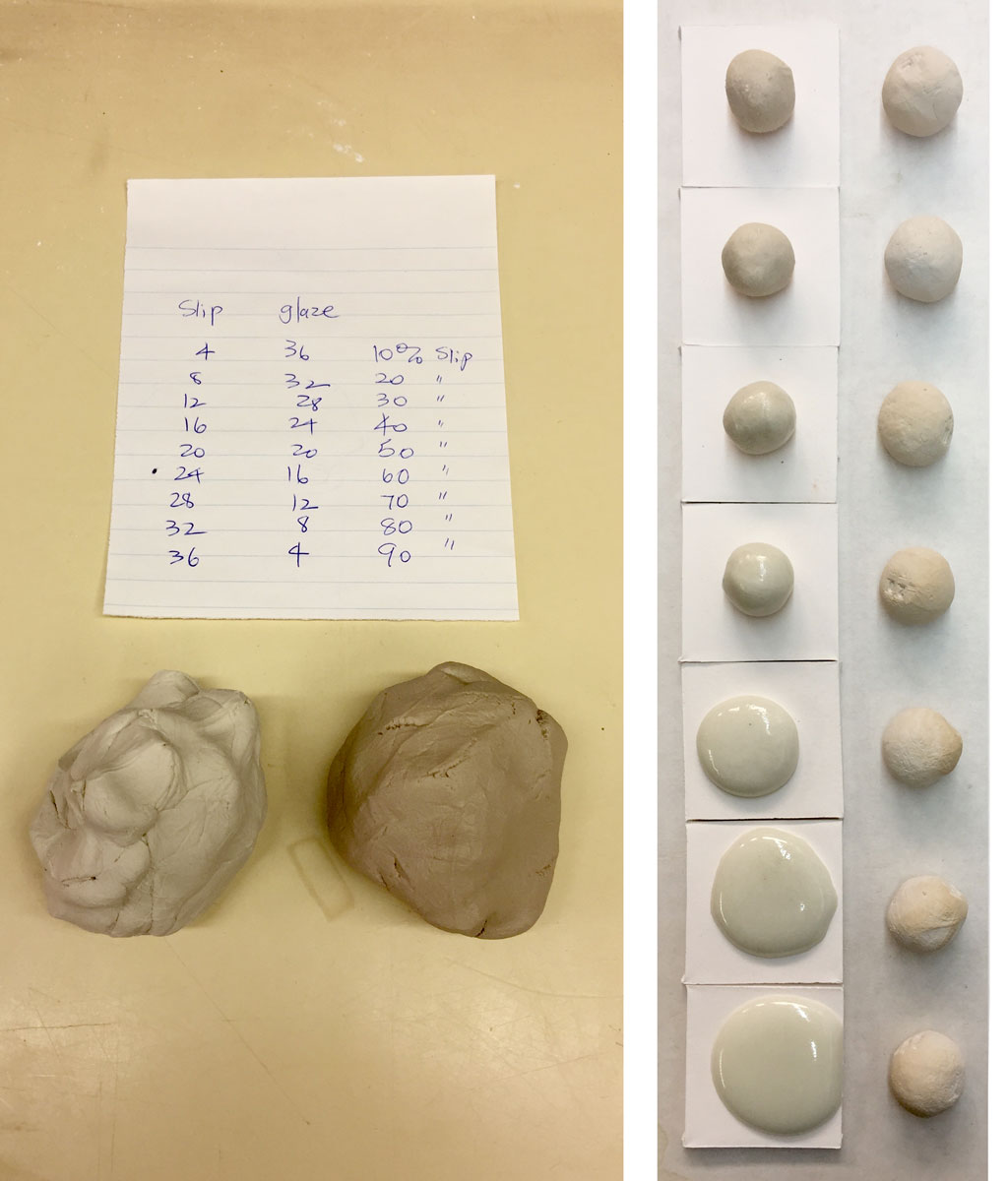| Monthly Tech-Tip | No tracking! No ads! | |
Stroke & Coat colors
This custom sample board was made by Solange Roy, it is great evidence of her meticulous and thorough approach to ceramics. This picture is taken at an angle to show the surface finish and character. These are Stroke & Coat ® underglazes, they are made by Mayco and widely used and praised. Although used as such by countless potters, they are not traditional underglazes (like Mayco Fundamentals or Amaco Velvets). They are heavily pigmented and have a highly controlled viscous melt fluidity. Applied by brush they give watercolour-like effects in thin applications and increasingly opaque coverage with each added layer. These products give evidence of meticulous lab work (like this board done by Solange), technicians would have had to do melt fluidity tests of each color and fine-tune the base recipe to get the desired degree of melt fluidity (compensating for the unique effect on melting of each stain type and percentage needed).
Related Pictures
Blending an engobe and a glaze to produce an underglaze

This picture has its own page with more detail, click here to see it.
These fired samples demostrarte how you could develop your own Stroke & Coat glazes. I made these blends by dewatering an engobe (L3954B) and glaze (G2926B) and then hand-mixing line blending them. The left column is the fired blends (cone 6), the right one the unfired ones (showing the increase in soluble salts as the percentage of glaze increases). The right one shows the increase in melt fluidity. The top ones are 30:70 glaze:engobe and the bottom ones are 90:10 glaze:engobe. Notice the big change in melt fluidity between 60 and 70% glaze (third and fourth from bottom). And that the 70% one is quite glossy even though it has very low melt fluidity. Somewhere between 60 and 70 we could isolate a glaze-like product having underglaze stability. Stains could be incorporated and the proportion of glaze:underglaze adjusted according to its effect on melt fluidity. Doing this yourself enables targeting an exact melt fluidity for each color at the target temperature. The commercial product does not do that. You can also use more stain then they do to get more vibrant color for thinner applications.
One use for a ball melt fluidity test

This picture has its own page with more detail, click here to see it.
Some types of ceramic glazes require tight control of the melt fluidity. Stroke & Coat under glazes, by Mayco, are such a product. They add stains to a base glaze recipe that has a stiff and viscous melt. Some ceramic stains flux (make it melt more), some are refractory (impede the melting) and other are neutral. Some require small percentages (e.g. -5%) and others much more (e.g. 20%+). Thus, during development, a way to compare the melt flow is crucial to adjusting the base to accomodate the stain (or stain mix) and still melt to the same degree.
Videos
Links
| URLs |
https://www.maycocolors.com/color/fired/stroke-coat/
Stroke & Coat® are glazes, not underglazes. They are heavily pigmented and have a viscous melt. Applied by brush they give watercolour-like effects in thin applications and increasingly opaque coverage with each added layer. |
| URLs |
https://www.maycocolors.com/color/fired/duncan-e-z-stroke-translucent-underglazes/
Duncan E-Z Stroke underglazes for water color painted effects on ceramics. An equivalent to Stroke & Coat but not as melted. Can be used as overglaze colors. |
| URLs |
https://www.maycocolors.com/color/fired/designer-liner/
Mayco Designer Liner - a clay based and heavily pigmented underglaze for fine detail lines, dots, and letters. |
| URLs |
https://solangeroy.com/
Solange Roy is a francophone, Indigenous Candian ceramic artist. |
Got a Question?
Buy me a coffee and we can talk

https://digitalfire.com, All Rights Reserved
Privacy Policy

